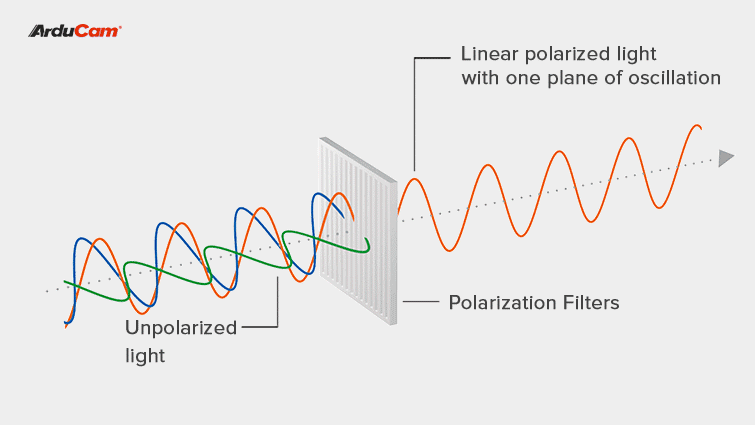What Optical Filters Are, How They Work, and Why You Need Them
An optical filter controls how a camera module captures light at the spectral level.
If you try to tear a camera module down to see what it’s made with, you will likely find that, together with an image sensor, a lens, and a PCB board, there’s also an optical filter in it. Camera modules in many consumer products, like camcorders, action cameras, webcams, and cellphones, usually have an infrared-blocking filter in front of the image sensor to deal with sensitivity issues, this is one of the most common types of optical filters used in modern-day digital cameras.
However, when it comes to industrial, medical, or other imaging applications (embedded or not), where camera systems are built for inspection purposes, where only certain bands of the spectrum are required, where light beams need to be segmented before they can reach the image sensor, things become more complex, and that’s why we need optical filters.
The Spectrum: Light in Different Wavelengths and Their Utilization in Imaging Applications
As a form of electromagnetic wave, all types of light, including those invisible to the human eye, also come in different wavelengths and frequencies; many real-world applications rely on visual systems that are designed for capturing particular spectral ranges.
Cameras equipped with the appropriate image sensor and optical filter can utilize a big portion of the electromagnetic spectrum to create imaging solutions for many industries and scientific fields.
Below is a list of typical wavelengths and their respective applications.
Infrared Light: 700 nm ~ 1 mm
Infrared light has the widest range of all EM waves and comes in 5 spectrums, the Near-Infrared (NIR) covers wavelengths between 750 nm ~ 1400 nm; the short-wavelength infrared (SWIR) sits between 1400 nm ~ 3000 nm; the mid-wavelength infrared (MWIR) has the range from 3000 nm to 8000 nm; the long-wavelength infrared (LWIR) features the range of 8000 nm ~ 15 μm, while the far-infrared (FIR) begins at 15 μm and goes all the way up to 1000 μm.
Infrared is mostly used for thermal imaging systems, night vision-based surveillance, water absorption detection/visualization, and telecommunication systems, etc.
Visible Light: 400 nm ~ 700 nm
Visible light, AKA “ROYGBIV”, also called natural light, is what human eyes can see, it has a spectral range between 400 nm to 700 nm, and is ideal for digital photography, VIS microscopy, VIS spectroscopy, etc.
Ultraviolet: 10 nm ~ 400 nm
UV light has a wavelength range between 10 nm ~ 400nm, it’s commonly used in fluorescence microscopy, UV spectroscopy, UV photolithography, drug detection and analysis, etc.
X-Ray: 0.01 nm ~ 10 nm
X-Ray has shorter wavelengths than UV, its spectral range is between 0.01 nm ~ 10 nm, it’s vastly used for applications like medical imaging, astronomy, fluoroscopy, radiotherapy, etc.
Arducam Optical Filters for Monochromatic, Multispectral, and Hyperspectral Camera Systems
Whether it’s about application-focused camera system designs, or project-led imaging science studies, optical filters are usually manufactured to block a specified bandwidth of wavelengths while transmitting other wavelengths.
By selectively utilizing or combining different kinds of optical filters with our embedded camera solutions, you can create cost-efficient imaging systems that are capable of leveraging machine vision for many monochromatic, multispectral, or hyperspectral applications.
Here are the types of optical filters we offer.
Different Types of Optical Filters
Longpass (LP) Filters
Shortpass (SP) filters
Bandpass Filters
Notch Filters
Neutral Density (ND) Filters

Polarization Filters
Need an embedded machine vision system with customized optical filters for specific wavelength ranges? Talk to one of our imaging scientists now.
Global Shutter Cameras for Multispectral Agricultural Imaging and Mapping
Why you should choose global shutter cameras for multispectral applications:
- In practice, camera sensors with rolling shutters being mounted on drones or UAVs tend to result in distorted or warped images and videos, the “jello effect” is caused by vibration from the drones and other disturbances in outdoor environments. For agricultural imaging, global shutter sensors are generally better.
- With the right optical filters, a monochrome global shutter sensor can be aligned with or detect any single/multiple spectral band(s).



Nice article with great graphics!
Nice Article i need ND filter for my application
Hi, my request is humble since I’m just an DIY Hobbyist. I’ve been experimenting with 3d scanning methods like Lidar, TOF and stereovision and finally came up with a simple setup: a line laser on a stepper motor, together with a raspberry pi + cam, triangulating every point of the line in 3d space. when the stepper inclines the laser plane one step every frame, it sweeps the image, resulting in a pretty good point cloud.
but it is unusable in ambient light because the laser is too weak. now I was searching for a very small IR bandpass filter that i could glew in front of the camera and replace the red line laser with IR line laser generator, like 808nm. then it should work in broad daylight, I guess..
do you have little amateur-class IR bandpass filters like this, and how much does one cost?
best, Philip
Hi Philip, we do have that, but it’s gonna need a bit of modification, pls talk to our sales team at sales at support.com
Hi, I need a camera able to see wavelength between 800nm and 1000 nm. Is it possible?
With the right optical filter and sensor, yes.
hi, im woking on agriculture solutions for pest and crop analicis, but im unsure about the IR filter arducam offers, its a band pass? a short pass? or what kind of filters is needed for Infrared? mostly i do need to see the plants health, damage of pest and water absorpcion, if anyone can give some detail about it, is welcome, thanks